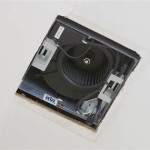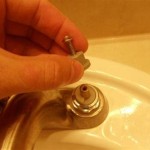How to Measure a Bathroom Fan
Ensuring proper ventilation in your bathroom is crucial for maintaining a healthy and comfortable environment. A well-functioning bathroom fan effectively removes moisture, odors, and pollutants, preventing mold growth and promoting air quality. When it comes to replacing or installing a new bathroom fan, accurate measurements are essential for choosing the right size and ensuring a seamless fit. Here's a comprehensive guide on how to measure a bathroom fan for optimal performance.
1. Determining the Fan Size
The first step is to determine the size of the bathroom fan you need. This is typically based on the square footage of your bathroom. Here's a general guideline for determining the appropriate fan size:
- Small bathrooms (up to 50 square feet): A 50 CFM (cubic feet per minute) fan is suitable.
- Medium-sized bathrooms (50-100 square feet): Aim for a 60-80 CFM fan.
- Large bathrooms (over 100 square feet): Consider a fan with a CFM rating of 100 or higher.
However, additional factors can influence fan size, including:
- Ceiling height: Higher ceilings require more powerful fans to effectively circulate air.
- Number of fixtures: Bathrooms with multiple showers or tubs may necessitate a larger fan.
- Airflow resistance: Obstacles such as walls or furniture can impede airflow and necessitate a more powerful fan.
2. Measuring the Existing Fan Housing
Once you have determined the required fan size, the next step is to measure the existing fan housing. This will ensure that the new fan fits seamlessly into the existing cutout. Measure the following dimensions:
- Width: Measure the distance across the opening of the fan housing.
- Height: Measure the distance from the top to the bottom of the fan housing opening.
- Depth: Measure the distance from the front to the back of the fan housing opening.
It's vital to note that these measurements are for the opening itself, not the dimensions of the fan blades or the housing itself. Some fans may have a slightly larger housing than the opening, so you may need to consider that when selecting a replacement fan.
3. Measuring the Ductwork
If your bathroom fan has ductwork, it's essential to determine the diameter of the duct. This ensures that the new fan is compatible with the existing ductwork. Measure the diameter of the duct opening using a tape measure or a ruler. If you need to change the duct size, it's recommended to seek professional assistance to ensure proper ventilation and airflow.
When measuring the ductwork, remember to check for any obstructions or bends that may affect airflow and ventilation. Ensure that the ductwork is free of debris or obstructions that could impede airflow, and consider using flexible ductwork to navigate tight spaces or bends.
By carefully measuring the existing fan housing and ductwork, you can ensure that the new bathroom fan you choose is the right size and shape for optimal performance and a seamless installation. Remember to consider the square footage of your bathroom, ceiling height, and airflow resistance to determine the appropriate CFM rating for your needs.

5 Ways To Calculate Cfm For Bathroom Fan Wikihow

Nutone Quickit Measuring Qkn60

How To Measure The Size Of Exhaust Fan Alharamelectronics

The Basics Of Bath Fans Fine Homebuilding

5 Ways To Calculate Cfm For Bathroom Fan Wikihow

5 Ways To Calculate Cfm For Bathroom Fan Wikihow

Hampton Bay 80 Cfm Ceiling Mount Roomside Installation Bathroom Exhaust Fan Energy Star Bpt13 14d The Home Depot

4 Benefits Of Having Ventilating Fan In Your Bathroom

5 Ways To Calculate Cfm For Bathroom Fan Wikihow

Bathroom Exhaust Fan Guide The Home Depot
Related Posts







